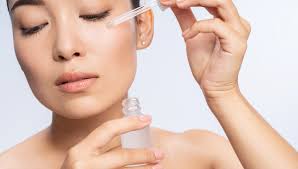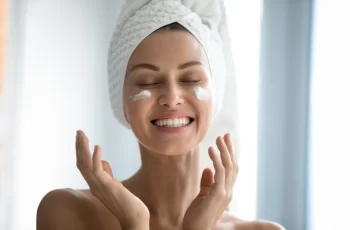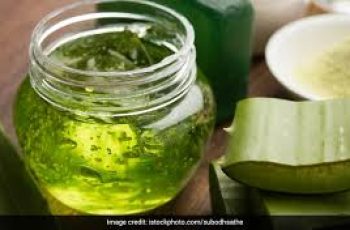
Kojic acid is a naturally occurring compound, primarily derived through the fermentation of fungi such as Aspergillus and Penicillium. It is also found in fermented soy and rice products like miso, soy sauce, and sake. This compound has become a key ingredient in the skincare and pharmaceutical industries due to its skin-lightening properties. It is frequently utilized in products designed to reduce hyperpigmentation, such as dark spots and melasma, by inhibiting the production of melanin.
### What is Kojic Acid?
Kojic acid works by disrupting the process of melanin production in the skin. Melanin is the pigment responsible for the color of the skin, eyes, and hair, but it can also contribute to hyperpigmentation conditions like dark spots and uneven skin tone. By inhibiting the activity of tyrosinase, an enzyme that plays a crucial role in melanin production, kojic acid effectively lightens the skin over time.
In addition to its use in cosmetics, kojic acid has applications in medicine, particularly for treating skin conditions that involve excessive pigmentation, such as melasma. However, it is important to note that while it has beneficial effects on the skin, kojic acid can also have side effects, including increased sun sensitivity and possible skin irritation.
### Uses of Kojic Acid
Kojic acid is employed across several industries, including cosmetics, pharmaceuticals, food, and even dental care.
**1. Cosmetics**
Kojic acid is widely incorporated into skin-lightening products, where it is typically present in concentrations ranging from 0.4% to 4%. These products are designed to reduce pigmentation, lighten dark spots, and even out the skin tone. However, kojic acid products are often more expensive than other skin-lightening agents like vitamin C or retinol.
**2. Dental Care**
Surprisingly, kojic acid also finds a role in the dental industry, where it can be used in products like tooth-whitening patches. Its ability to reduce pigmentation can extend beyond the skin to whiten teeth, offering an alternative to more traditional whitening methods.
**3. Medical Applications**
In the realm of healthcare, kojic acid is used to treat melasma, a condition characterized by dark, discolored patches on the skin, often caused by hormonal changes, such as those experienced during pregnancy or due to birth control. Kojic acid’s ability to inhibit melanin production helps to lighten these patches, leading to a more even skin tone. Additionally, kojic acid can also be found in antimicrobial medications, where it serves as a useful agent due to its broad-spectrum properties.
**4. Food Industry**
Kojic acid has antioxidant properties and is used as a food preservative. It helps to extend the shelf life of fresh vegetables, seafood, oils, flour, and syrup by preventing oxidation and the degradation of these products. Its use in food preservation is particularly popular in East Asian cuisine, where fermented soy and rice products like miso and soy sauce naturally contain kojic acid.
### Benefits of Kojic Acid
Kojic acid is most renowned for its ability to improve skin hyperpigmentation. A study investigating the effects of a 3% kojic acid cream on post-acne pigmentation showed promising results, with participants experiencing brighter skin and a reduction in the contrast of dark spots.
Additionally, kojic acid is sometimes used as an adjunct to other treatments for melasma, such as hydroquinone. While hydroquinone is the most common treatment for this condition, kojic acid may enhance its effects. It has also been found to have antimicrobial, anti-inflammatory, and antioxidant properties, although studies on these effects in human skin are limited.
While kojic acid can be purchased in many over-the-counter products, it is important to note that its availability is subject to regulation in different regions. In the United States, kojic acid can be used as part of melasma treatment regimens, but it has been banned in the European Union, Japan, and Australia due to safety concerns.
### How to Use Kojic Acid
Kojic acid is typically found in various forms, including creams, serums, lotions, soaps, and even sunscreen. These products often contain kojic acid concentrations ranging from 0.4% to 4%. To effectively incorporate kojic acid into your skincare routine, there are several guidelines to follow:
**1. Start with Lower Concentrations**
If you are new to kojic acid, it is recommended to use products with a maximum concentration of 1%. This concentration is generally considered safe for most people, but always consult a dermatologist before starting any new treatment.
**2. Patch Test**
Before using any product containing kojic acid, it is advisable to apply a small amount to a small patch of skin and monitor for any reactions over the next few days. If you experience itching, burning, or redness, discontinue use and seek advice from a dermatologist. Some individuals may be more sensitive to kojic acid, and long-term use can cause irritation.
**3. Sun Protection**
Kojic acid can increase your skin’s sensitivity to the sun. It is crucial to use sunscreen daily when using products containing kojic acid to protect your skin from potential sun damage. Sunscreen helps to reduce the risk of further pigmentation and irritation caused by UV exposure.
**4. Avoid Broken Skin**
Kojic acid should not be applied to broken or irritated skin. Wait until your skin has healed before using any products containing this acid.
### Safety and Side Effects
Kojic acid is generally considered safe for use in cosmetic products when formulated at concentrations of up to 1%. However, as with any active ingredient, there are potential side effects to be aware of. Skin-lightening agents, including kojic acid, have gained popularity in recent years, leading to an increase in both the demand and misuse of such products. A study revealed that while many people use skin-lightening agents for skin conditions, a significant number also use them for general skin lightening purposes. This misuse may contribute to increased health risks, especially if products are purchased from unregulated or dubious sources.
In rare cases, kojic acid has been linked to skin conditions like itching, burning, or redness. For individuals with sensitive skin, it is important to exercise caution. There have been reports of irritation when using kojic acid-containing face creams, so those with sensitive skin should approach its use carefully.
### How to Choose a Kojic Acid Product
When selecting a kojic acid product, it is important to keep several factors in mind:
**1. Concentration**
Choose products with no more than 1% kojic acid, as higher concentrations may pose risks, and their safety is not well-established.
**2. Evaluate Your Current Skincare Routine**
If you are already using other skin-lightening agents like hydroquinone, retinoids, or azelaic acid, it is crucial not to overuse these ingredients, as this could lead to long-term skin irritation and health concerns. Consult your dermatologist to ensure that the combination of products is safe and effective.
**3. Avoid Unregulated Products**
It is important to avoid homemade creams or products from untrustworthy sellers. Some unregulated products may contain harmful ingredients, such as heavy metals or steroids, which can lead to severe skin issues.
### Conclusion
Kojic acid is a powerful ingredient in the world of skincare, especially for individuals looking to address hyperpigmentation and skin discoloration. Its ability to reduce melanin production makes it a popular choice for treating dark spots, melasma, and other pigmentation issues. However, as with any active ingredient, it is important to use kojic acid safely and to be mindful of potential side effects, especially for those with sensitive skin.
When using kojic acid, start with lower concentrations, perform a patch test, and always protect your skin from the sun with sunscreen. For the best results, consult with a dermatologist to ensure that kojic acid is right for your skin and that you are using it in combination with other skincare products safely.


